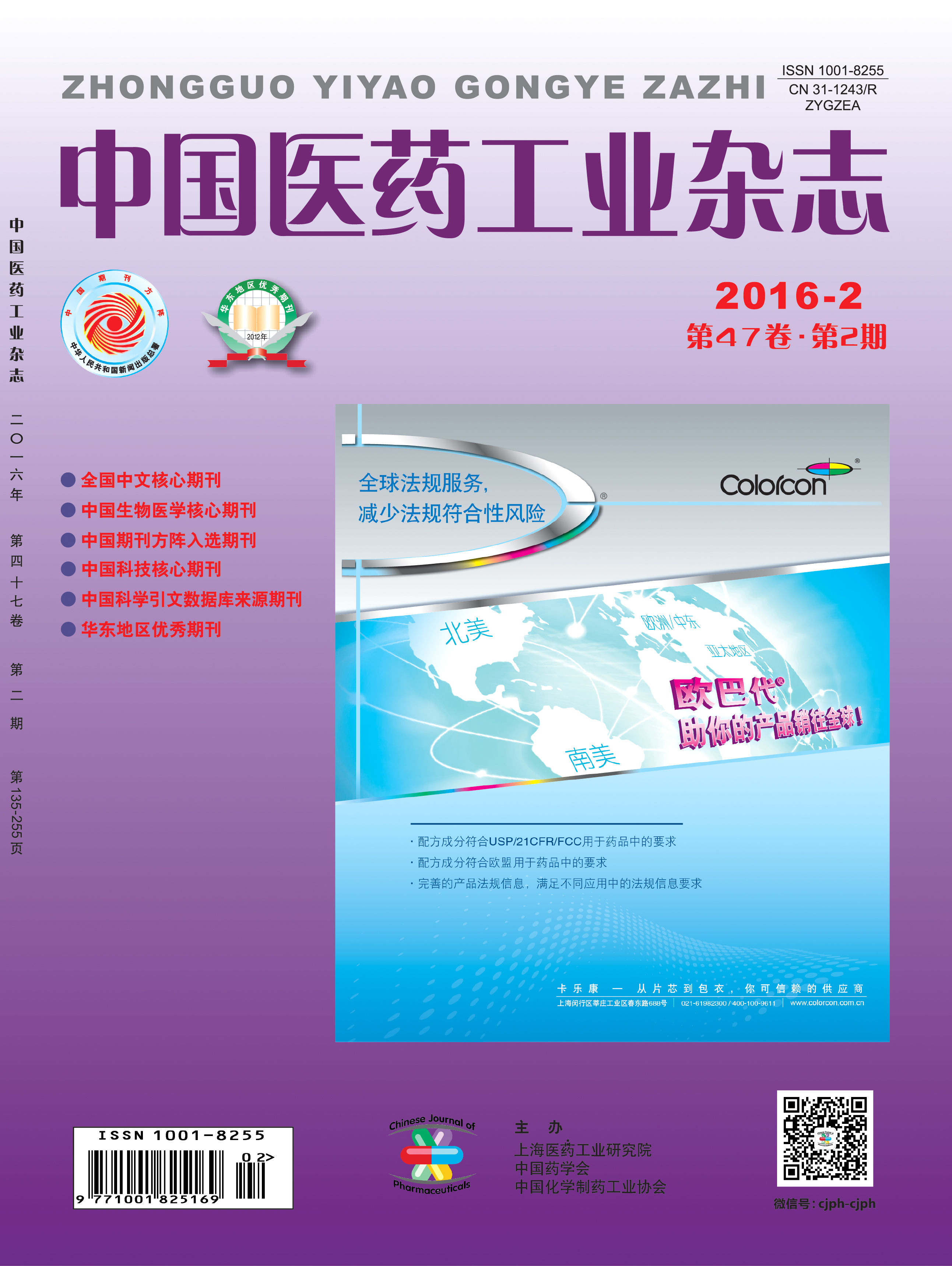XU Zhiru1, XIAO Feng1, JIANG Chunhong2, QIN Yan1, YANG Xiaoling2*
An LC-MS/MS method was established for the determination of naringin (1) and neohesperidin (2), as well as their aglycones naringenin (3) and hesperetin (4), in Beagle dog plasma. Its pharmacokinetics was also investigated after oral administration of total flavanones of Fructus Aurantii Immuaturus extract to Beagle dogs. A C18 column was used with the mobile phase of methanol∶10 mmol/L ammonium formate by gradient elution via negative electrospray ionization (ESI) mass spectrometry with multiple-reaction monitoring (MRM) mode. The total flavanones of Furctus Aurantii Immuaturus extract were administrated to dogs via oral route (17, 50 and 150 mg/kg) and intravenous injection (5 mg/kg). The main pharmacokinetic parameters of 1 and 2 after oral administration were as follows: t1/2(5.32± 2.13), (5.23±3.20), (5.98±3.49) and (3.82±1.98), (3.58±1.02), (5.06±4.04) h, cmax (107±35), (310±136), (501±
269) and (101±34, 297±118, 481±240) ng/ml, AUC0→t(391±161), (605±229), (964±333) and (277±43), (684±377), (927±224) ng·ml-1·h. The bioavailabilities for 1 and 2 were (3.51±1.44)%, (1.84±0.70)%, (0.98±0.34)% and (2.27± 0.35)%, (1.91±0.96)%, (0.86±0.21)%, respectively. The main pharmacokinetic parameters of 1 and 2 after intravenous injection were as follows: t1/2 (5.48±4.17) and (3.68±1.91) h, AUC0→t (3 590±652) and (3 281±594) ng·ml-1·h.
